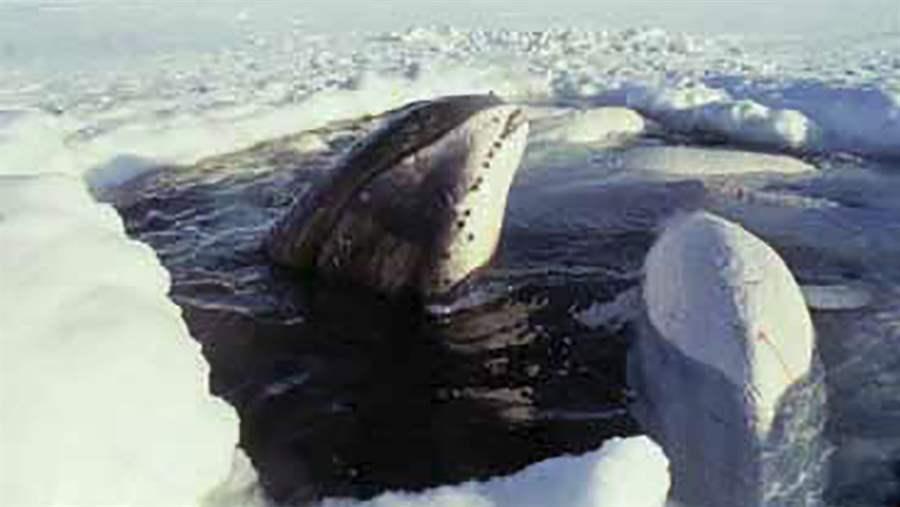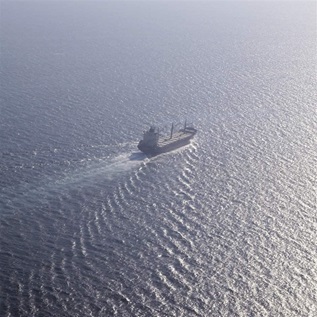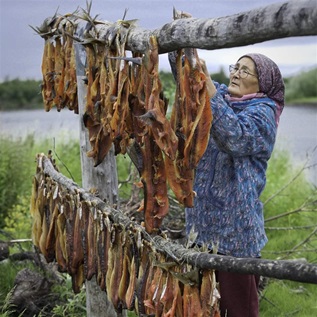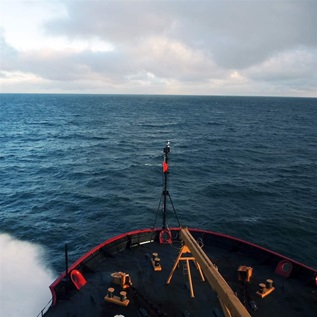Oil in the Arctic Ecosystem
The Arctic Ocean is a rich ecosystem, home to whales, walruses, polar bears and ice seals, as well as sea birds, fish and a myriad of smaller organisms that support a complex food web.
Even in the depths of winter, the Arctic Ocean is not a solid sheet of ice. There are persistent areas of open water surrounded by ice called polynyas. Ecological activity in Arctic waters is concentrated in these openings and at the edges of the ice, where an abundance of phytoplankton forms the base of the food chain. Polynyas provide spaces for marine mammals and birds to surface and breathe, while the nearby ice provides a platform for animals to rest, hunt, and give birth.
 © Steve Ramsey
© Steve Ramsey
Bowhead and beluga surface in a Polynya
If an oil spill were to occur in broken ice, oil would concentrate in polynyas and at the ice edges that form the heart of the ecosystem, threatening much of the life in the Arctic Ocean. Additionally, oil spill response operations plan to use these open areas to concentrate and burn the oil, a plan that could result in severe impacts to this ecosystem. See our recommendations on assessing spill response capacity.
Impacts of Oil
Oil is toxic. It can affect organisms from plankton to whales, causing acute harm to creatures such as birds that get trapped in the oil, chronic toxicity to long-lived animals and lasting effects on populations. The impacts of an oil spill in the Arctic where the environment is already stressed by the rapidly melting ice pack could be devastating.
If spilled or leaking oil can be effectively contained at its source or promptly removed from the environment, the overall consequences of the release will be much less severe than a scenario where the full spill volume is released to the environment. In the Arctic marine environment, the chance that a catastrophic oil spill might exceed the operating limits of oil spill response technologies is significant. Those limits include high seas that prevent skimmers from recovering oil or heavy fog that grounds aircraft spraying dispersants.
Oil persists longer in Arctic conditions because it evaporates more slowly or may be trapped in or under ice, and is thus less accessible to bacterial degradation. Population recovery after an oil spill may be slowed because many species have relatively long life spans and produce fewer offspring. Recent research published in the United States suggests that long-term consequences of oil spills to temperate and sub-Arctic coastal environments may persist well beyond initial projections. Long term impacts could be similarly persistent along Arctic shorelines.
ENDNOTES:
AMAP (1998). AMAP Assessment Report: Arctic Pollution Issues. Arctic Monitoring and Assessment Programme (AMAP). Oslo, Norway.
Culbertson, Jennifer B., Ivan Valiela, Emily E. Peacock, Christopher M. Reddy, Anna Carter and Rachel VanderKruik. 2007. Long-term biological effects of petroleum residues on fiddler crabs in salt marshes. Marine Pollution Bulletin.
Peterson, Charles H.,Stanley D. Rice, Jeffrey W. Short, Daniel Esler, James L. Bodkin, Brenda E. Ballachey and David B. Irons (2003). Long-term ecosystem response to the Exxon Valdez oil spill.Science 302. 19 December.






